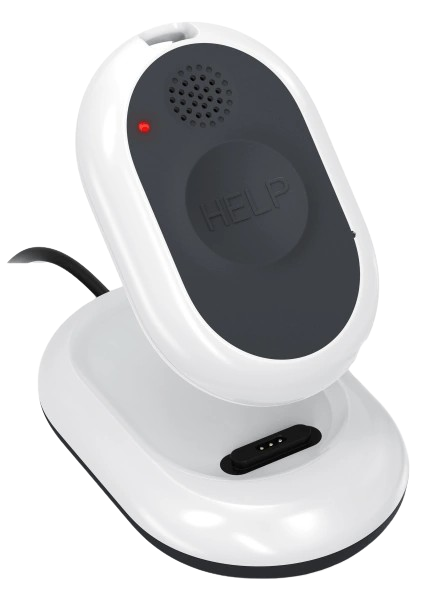Canada separates laws and policies across federal and provincial/territorial levels. In Ontario, employment policies for lone workers are shaped by both the federal Occupational Health and Safety Code and the province’s detailed regulations.
Ontario employers are encouraged to review these combined guidelines to ensure safe working conditions for lone workers. This page provides a concise overview of the best practices and legal expectations in Ontario.
On This Page
Our Guide To Lone Worker Safety Policy And Legislation In Ontario
Lone work environments in Ontario can pose significant risks, making it imperative for employers to follow both Ontario-specific legislation and Canadian federal laws. Proper adherence ensures safer conditions for lone workers.
This page outlines important details for Ontario employers, including how to address hazard assessment and control requirements under the Occupational Health & Safety Code (OHS).
How Ontario Defines A Lone Worker
Ontario does not have province-specific lone worker policies. Instead, lone worker safety is governed under the Occupational Health and Safety Act (OHS).
A lone worker is understood to be an individual working without direct supervision or anyone readily available to provide assistance in case of emergencies such as injury, accident, or violence.
Employing A Lone Worker In Ontario
Employers should develop and implement procedures for working alone, integrating them into their workplace violence prevention program, and assess risks to determine situations where working alone is unsafe. Best practices include using reliable check-in/check-out systems to monitor workers’ locations, preparing daily work plans, and establishing clear responses to distress calls.
Training is essential to help workers recognize and avoid potentially violent situations, resolve conflicts, and respond to incidents. Workers should be informed about high-risk areas or tasks. Employers should also avoid assigning lone workers high-risk tasks whenever possible, such as handling hazardous materials or working with dangerous equipment. Overall, proactive planning, effective communication, and risk mitigation are key to ensuring lone worker safety.
Learn How You Can Protect Your Employees With Loneworker.com

With Loneworker.com you can be equipped with the knowledge and the means to protect your employees and protect your business. Contact us today to learn more about how Loneworker.com can protect you and your employees.
How The Safe Lone Worker App Can Protect Ontario Lone Workers And Employers
An important part of keeping your lone workers safe is providing quick and easy communication and monitoring in the event of an emergency.
With the Safe Lone Worker App, you can easily monitor your employees' while they are carrying out their responsibilities, even if they are travelling alone. The app works in tandem with a man down alert button that can be pressed in the event of an emergency. If the button is pushed, the lone worker will be immediately put into contact with a monitoring center that can send help immediately and contact the employer.
Ontario Lone Worker Policies
The content below has been included as a direct reference for lone worker policies as provided by Ontario. This content has been included to serve as more detailed information and an easy reference point. This information is provided for your convenience, but should not be taken as legal advice. We encourage you to conduct your own research into the laws and regulations of your jurisdiction before making any decisions.
Introduction
Ontario does not have province specific lone worker policies, but instead adheres to the Occupational Health and Safety Act (OHSA). Below is a reference guide, and as such, does not replace the OHSA and its regulations and should not be used as or considered legal advice.
Concerns and Hazards for Ontario Lone Workers
Lone workers may require medical, police or employer assistance, due to injury, accident or assault, for example.
Actions For Employers
Employers should:
- develop and implement procedures for working alone, including procedures as part of their workplace violence program.
- consider alternatives to workers working alone, such as pairing workers together in potentially high risk situations.
Working Alone Procedures
Employers should consider the following in their procedures:
- determining situations in which workers must not work alone
- a reliable method for knowing the location of their workers at all times, for example, a check-in/check-out procedure for workers, by cell phone or radio, to a supervisor or dispatch centre, and preparing a daily work plan.
- a predetermined response to distress calls from workers
- training for workers on how to recognize and avoid potentially violent situations
- training for workers on conflict resolution and mediation
- procedures to follow if an assault takes place
- providing information on high risk geographical areas to workers
- limiting the time of day visits can be made to high risk areas/clients
- keeping client records and informing workers of clients known to be aggressive, hostile or potentially violent
Learn How The Lone Worker Monitoring Device Works.

By using a Safe Lone Worker Man Down alert you can monitoring your employees and keep them safe even while they are travelling or working on their own.
Our devices are equipped with cellular and GPS technology to provide service all across Canada and the United States of America.
Contact us today to get your Safe Lone Worker Man Down Alerts for you and your business.
Safe Practices for Field Activities
When you are carrying out field calls, such as serving official documents or conducting enforcement activities, you should:
- access all available information about a client before meeting with them
- arrange to meet clients in a 'safe' environment where other people are around, such as a restaurant, hotel lobby, or their office/workplace if at all possible
- wear comfortable, professional clothing and practical shoes which will enable a quick exit, if necessary
- wear or carry your identification badge, to show that you are acting in an official capacity and doing your job
- carry only what is necessary, avoiding large or numerous bags or cases
- always take a cell phone or radio, if provided, and keep it in an accessible location
- be alert and make mental notes of the surroundings when arriving at a new place
- know where the exits are at all times
- direct the client’s movements, if necessary, to avoid allowing the client to come between you and the exit
- maintain a 'reactionary gap' between yourself and the client, out of reach of the average person’s kicking distance
- sit across the table from the client to increase the gap, if possible.
- bring two copies of any written material, so that you can sit across from the client and avoid sitting beside them
- ask a colleague to come with you if something makes you feel uneasy
- discuss any feelings of discomfort or apprehension about an up-coming meeting with your supervisor
- keep records and indicate if the client is known to be aggressive, hostile or potentially violent, and include incidents that made you feel apprehensive
You should not:
- enter any situation or location where you feel threatened or unsafe
- remain in any situation or location that you feel has become or has the potential to become threatening or unsafe
- carry weapons of any type, including pepper spray, as weapons are dangerous and can be easily used against you
- post or announce your official schedule on social media
- hesitate to call for police assistance
High Risk Activities to Avoid When Working Alone
You should avoid these high risk activities when working alone:
- working at heights or in elevator shafts
- working with electricity or with de-energized or locked out/tagged out equipment
- hazardous substances or materials
- hazardous equipment such as chainsaws
- materials at great pressure
- working with the public, where there is a potential for violence
References
Working Alone or in Isolation. Ontario Government Website.
Government of Canada, Canadian Centre for Occupational Health and Safety. Working Alone - General. 10 May 2024.
Loneworker.com is an aggregate resource and is not directly affiliated with government policies, legislation, or guidelines. Our site is intended to gather and display information for your use, but you are encouraged to conduct your own research.
Ontario Lone Worker Resources

WSIB Ontario
Telephone
- 416-344-1000
Toll free
- 1-800-387-0750
Deaf or hard of hearing (TTY)
- 1-800-387-0050

Lone Worker And Employment Facts In Ontario
8.20 Million People Are Employed In Ontario
Forestry, Fishing, Mining, Quarrying, Oil and Gas, And Public Administration Make Up The Majority Of Ontario’s Employment Industry
Affordable Monitoring For Lone Workers In Ontario

-
 Monitoring Your Employees' Safety
Monitoring Your Employees' Safety
-
 GPS Tracking And Monitoring
GPS Tracking And Monitoring
-
 Man Down Panic Alerts
Man Down Panic Alerts
-
 24/7 Protection Anywhere
24/7 Protection Anywhere
Lone Worker Legislation
Lone Worker Safety Policies And Legislation By Province
-
 Alberta Provincial Safety Policies And Legislation
Alberta Provincial Safety Policies And Legislation
-
 British Columbia Provincial Safety Policies And Legislation
British Columbia Provincial Safety Policies And Legislation
-
 Manitoba Provincial Safety Policies And Legislation
Manitoba Provincial Safety Policies And Legislation
-
 New Brunswick Provincial Safety Policies And Legislation
New Brunswick Provincial Safety Policies And Legislation
-
 Newfoundland and Labrador Provincial Safety Policies And Legislation
Newfoundland and Labrador Provincial Safety Policies And Legislation
-
 Nova Scotia Provincial Safety Policies And Legislation
Nova Scotia Provincial Safety Policies And Legislation
-
 Ontario Provincial Safety Policies And Legislation
Ontario Provincial Safety Policies And Legislation
-
 Prince Edward Island Provincial Safety Policies And Legislation
Prince Edward Island Provincial Safety Policies And Legislation
-
 Quebec Provincial Safety Policies And Legislation
Quebec Provincial Safety Policies And Legislation
-
 Saskatchewan Provincial Safety Policies And Legislation
Saskatchewan Provincial Safety Policies And Legislation
-
 Northwest Territories Provincial Safety Policies And Legislation
Northwest Territories Provincial Safety Policies And Legislation
-
 Nunavut Provincial Safety Policies And Legislation
Nunavut Provincial Safety Policies And Legislation
-
 Yukon Provincial Safety Policies And Legislation
Yukon Provincial Safety Policies And Legislation







